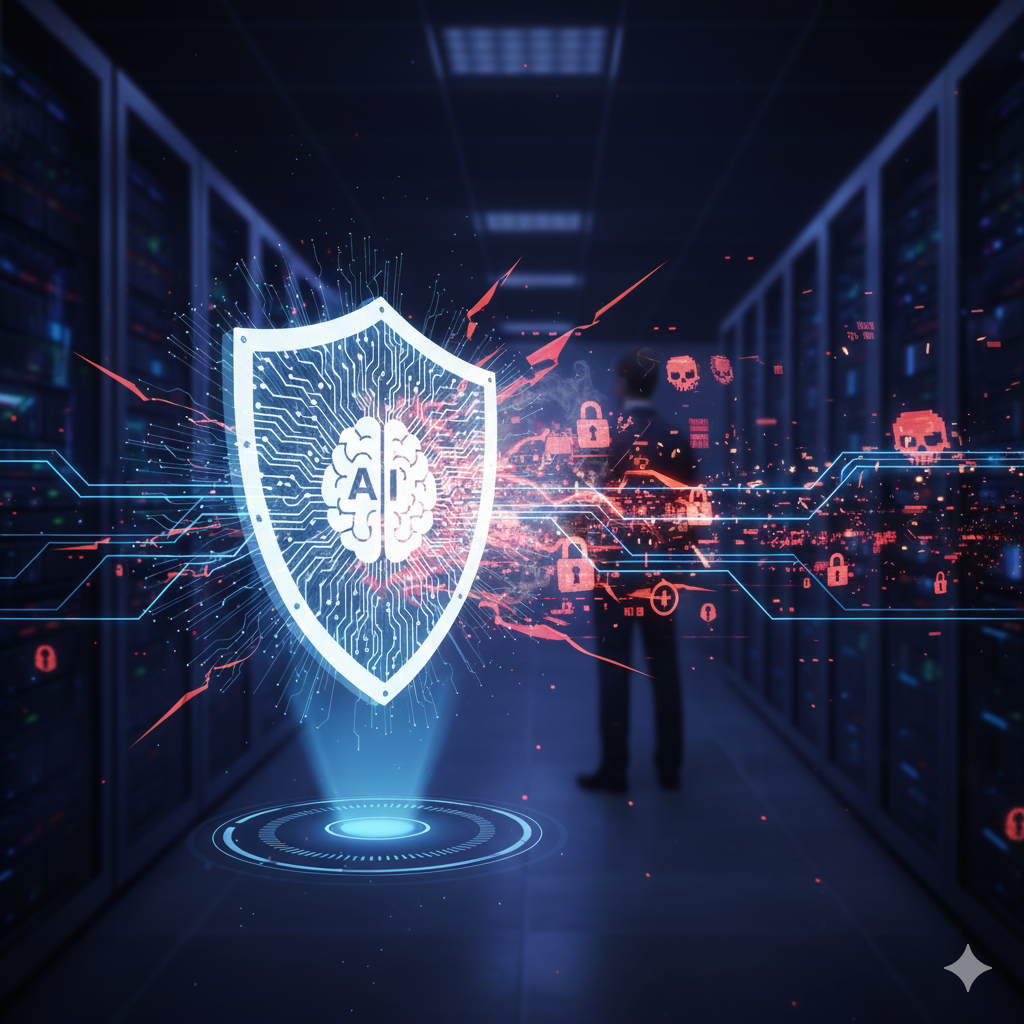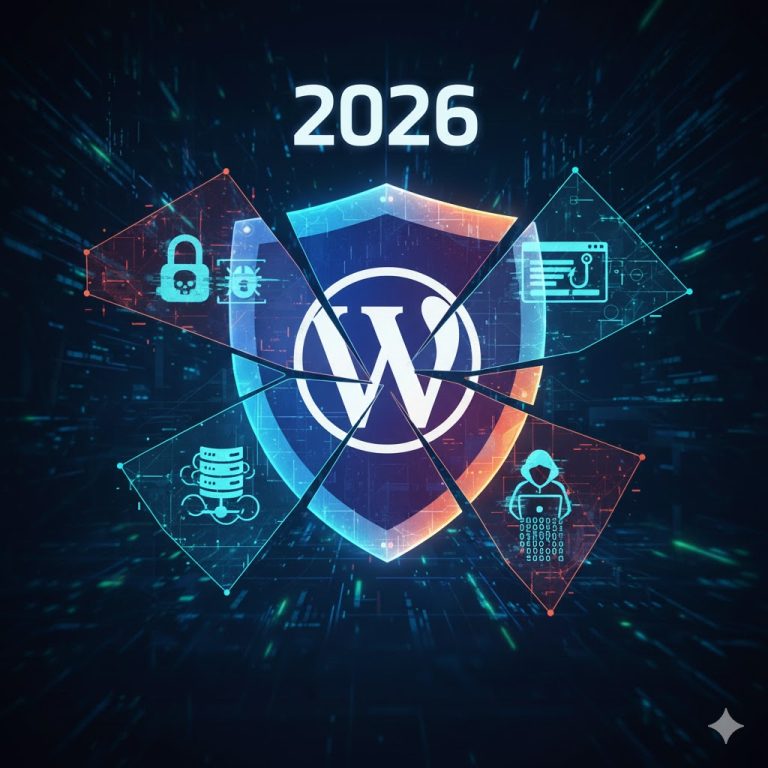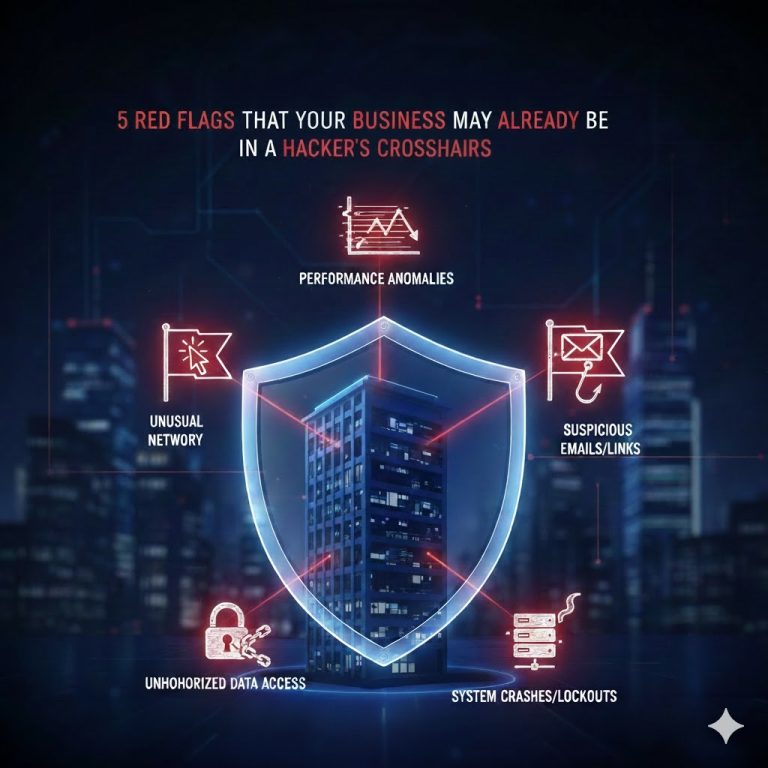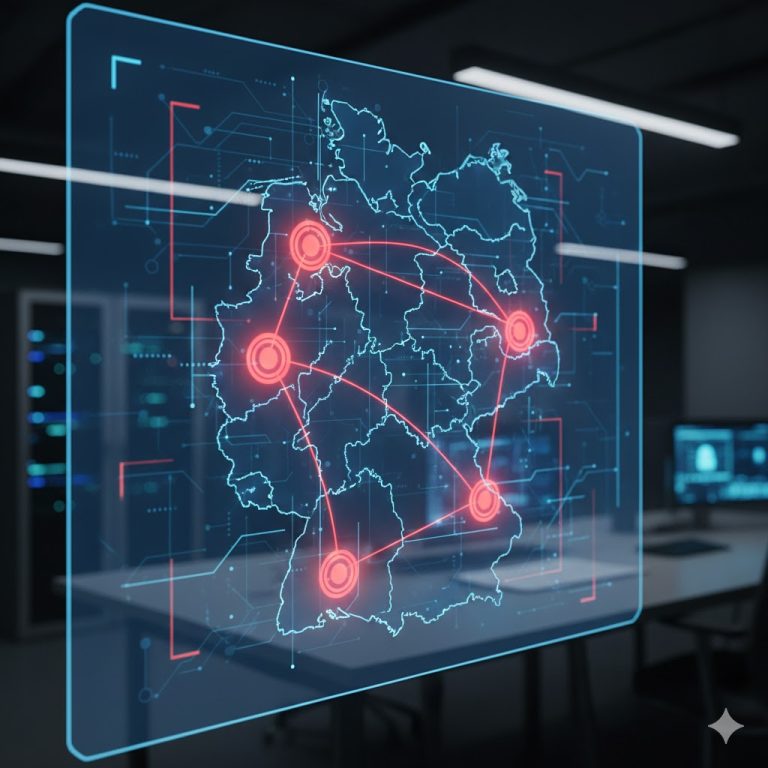Cyberattacks are no longer just a problem for large corporations – small and medium-sized businesses are increasingly in hackers’ crosshairs. The reason is simple: many SMEs underestimate the risk and often lack the resources for comprehensive IT security. That makes them attractive and easy targets.
The consequences, however, can be devastating: data loss, production downtime, reputational damage, or even legal liability. Studies show that over 60% of businesses affected by a major cyberattack shut down within six months.
At the same time, attacks are becoming more sophisticated. Hackers themselves are now using artificial intelligence to find vulnerabilities faster, craft highly convincing phishing emails, or automate brute-force password attempts. Traditional defenses like firewalls and antivirus software quickly reach their limits.
So the key question is: How can companies keep up?
One promising answer is to turn the attackers’ weapons against them – by embracing AI-powered cybersecurity. With its ability to detect threats in real time, predict attack patterns, and launch instant countermeasures, AI has the potential to become a game-changer in the fight against cybercrime.
1. Threat Detection in Real Time
One of AI’s biggest strengths in cybersecurity is its ability to analyze massive amounts of data in real time. Traditional systems usually rely on static rules – for example, blocking a specific known virus signature or a blacklisted IP address. The problem? Hackers constantly change their tactics, and by the time a rule is updated, the attack may already have slipped through.
AI, on the other hand, doesn’t just look for known threats. It learns from patterns of normal user behavior and immediately flags anomalies that might indicate an intrusion. For instance:
-
If an employee usually logs in from Germany during office hours but suddenly accesses the system from another continent at 3 a.m., AI can raise a red flag.
-
If a server suddenly transfers unusually large volumes of data, the system can detect this as a possible data breach attempt.
-
Even subtle signs – like unusual typing speed during logins or small changes in network traffic – can trigger AI-based alerts.
Because AI can process thousands of events per second, it provides a level of visibility and speed that humans alone could never achieve. Instead of reacting hours or days later, companies can be notified the very moment something suspicious happens.
This doesn’t just reduce the risk of successful attacks – it also minimizes potential damage. The faster an attack is discovered, the quicker IT teams (or automated systems) can respond to stop it before sensitive data is stolen or systems are locked by ransomware.
In short: AI turns cybersecurity from reactive defense into proactive protection.
2. Predicting Future Attacks
Another powerful advantage of AI is its ability to predict what might happen next. Unlike traditional tools that only react once a known threat appears, AI systems continuously analyze millions of past attacks, system logs, and global threat intelligence. By spotting subtle patterns in hacker behavior, AI can anticipate likely attack scenarios before they ever reach your business.
This predictive strength is critical because cybercriminals rarely attack “out of the blue.” Most campaigns leave behind early warning signs: unusual network scans, testing of weak passwords, or phishing waves aimed at similar companies. AI can catch these signals and turn them into actionable insights.
For example:
-
Phishing Campaign Alerts – If AI identifies a sudden rise in phishing attempts against businesses in your industry, it can proactively warn your organization, giving you time to brief employees and strengthen email filters before those messages land in inboxes.
-
Brute-Force Attack Forecasting – When systems show early indicators of brute-force activity (like repeated failed logins from multiple IPs), AI can anticipate an escalation, throttle suspicious requests, and lock vulnerable accounts before they’re compromised.
-
Vulnerability Mapping – Machine learning models can highlight which servers, outdated plugins, or misconfigured applications in your company are most likely to be exploited. This allows IT teams to patch or harden them before attackers find their way in.
-
Supply Chain Risk Detection – If one of your software vendors or cloud providers is being probed by hackers, AI can flag the potential risk so you can take precautions, such as monitoring access more closely or limiting third-party integrations.
-
Behavioral Baselines – By studying what “normal” looks like in your business (usual working hours, data usage, access patterns), AI can predict when an employee account may be at risk of takeover – even before the hacker makes a major move.
This predictive capability transforms cybersecurity from constantly “putting out fires” into a structured form of active risk management. Instead of reacting when it’s already too late, companies can:
-
allocate security resources more strategically,
-
prepare employees with targeted awareness training,
-
and close dangerous gaps before criminals exploit them.
In other words, AI gives businesses the ability to see around corners in cyberspace. It replaces guesswork with foresight and gives you the time advantage that hackers never expect you to have.
3. Automated Incident Response
Even with strong preventive measures, no system is 100% secure. Sooner or later, a clever attacker may slip through. In such moments, speed of response is everything. A delayed reaction can mean the difference between a minor security incident and a full-blown crisis that paralyzes operations.
Traditional responses often rely on human IT teams analyzing logs, escalating alerts, and manually shutting down compromised systems. This process can take hours – sometimes days – during which attackers can steal sensitive data, install ransomware, or spread malware across the entire network.
This is where AI’s ability to automate incident response becomes a game-changer. Instead of waiting for human intervention, AI can act within seconds:
-
Isolating compromised devices: If malware is detected on one computer, AI can instantly disconnect it from the company network, preventing lateral movement to other systems.
-
Blocking malicious IPs in real time: AI-driven firewalls can identify suspicious traffic patterns and block them on the spot – stopping hackers before they gain a foothold.
-
Disabling hacked user accounts: When login credentials are compromised, AI can freeze the affected account automatically, reducing the risk of privilege escalation.
-
Triggering automatic backups and failover: If ransomware attempts to encrypt files, AI can initiate a backup restore process or switch to redundant systems, keeping the business operational.
A good example is how some AI-powered endpoint detection and response (EDR) tools work: if unusual encryption activity is detected (a hallmark of ransomware), the AI immediately pauses the process, quarantines the files, and alerts the IT team. In many cases, this stops the attack before a single file is lost.
Of course, automation doesn’t replace human expertise. Security professionals are still needed to investigate the incident, understand the root cause, and strengthen defenses for the future. But by letting AI handle the first, most critical minutes, IT teams gain precious time to respond strategically instead of scrambling in panic.
The result is clear: less downtime, less damage, and faster recovery – all of which are crucial to maintaining customer trust and business continuity.
4. Continuous Training and Improvement
Cybersecurity is never static. Every day, new malware strains, phishing tactics, and ransomware variants emerge. What worked as protection last year – or even last month – may already be outdated today. This is exactly where AI offers a decisive advantage over traditional, rule-based systems: it can continuously learn and adapt.
Each unusual login attempt, every suspicious email, and even failed attack attempts become training data. Instead of discarding that information, AI models analyze it to recognize patterns and improve detection accuracy. This means your defenses don’t just stay current – they actually get smarter with every encounter.
Some key benefits of continuous AI learning include:
-
Adaptive Malware Defense – AI can identify new malware not by its “signature” (as traditional antivirus does) but by its behavior. For example, if a program suddenly starts encrypting files or contacting shady servers, AI will flag it as malicious even if it has never been seen before.
-
Phishing Evolution Tracking – Hackers constantly refine their phishing emails to bypass spam filters. AI learns from these evolving tricks, improving recognition of fake domains, unusual wording, or abnormal sending behavior.
-
Crowdsourced Threat Intelligence – Many AI cybersecurity platforms share anonymized attack data across networks. This means if an attack is spotted at one company, thousands of others benefit instantly by having their AI models updated against that threat.
-
Self-Improving Algorithms – As more data flows in, the AI adjusts its thresholds and reduces false positives. Over time, alerts become more accurate, which saves IT teams from “alert fatigue” and ensures they can focus on the real threats.
In practice, this creates a kind of living, evolving shield around your business. Instead of standing still while attackers move forward, AI-driven defenses continuously grow alongside the threat landscape – and sometimes even a step ahead.
For companies, the takeaway is clear: adopting AI in cybersecurity is not just about defending against today’s attacks, but about building resilience for tomorrow. With every attempted breach, your system becomes more prepared for the next one.
Conclusion – Can artificial intelligence protect companies from hackers
So, can artificial intelligence protect companies from hackers? The answer is a clear yes – but only as part of a bigger picture. AI has the power to detect threats in real time, predict future attacks, automate responses, and continuously learn from new data. These strengths make it an invaluable ally in modern cybersecurity.
However, no technology is foolproof. Hackers are creative, and even the smartest AI cannot replace human judgment, strategic planning, or the importance of employee awareness. The most effective defense comes from a hybrid approach: AI provides speed and scale, while human expertise adds context, intuition, and oversight.
For businesses of all sizes – especially small and medium-sized companies that are increasingly targeted – investing in AI-driven cybersecurity is no longer optional. It’s a proactive step toward protecting your data, your reputation, and ultimately, your future.
Please also read:
Smarter Security: Are AI-Powered Firewalls the Future of Cyber Defense
Follow me on Facebook or Tumblr to stay up to date.
Connect with me on LinkedIn
Take a look at my services
And for even more valuable tips, sign up for my newsletter





